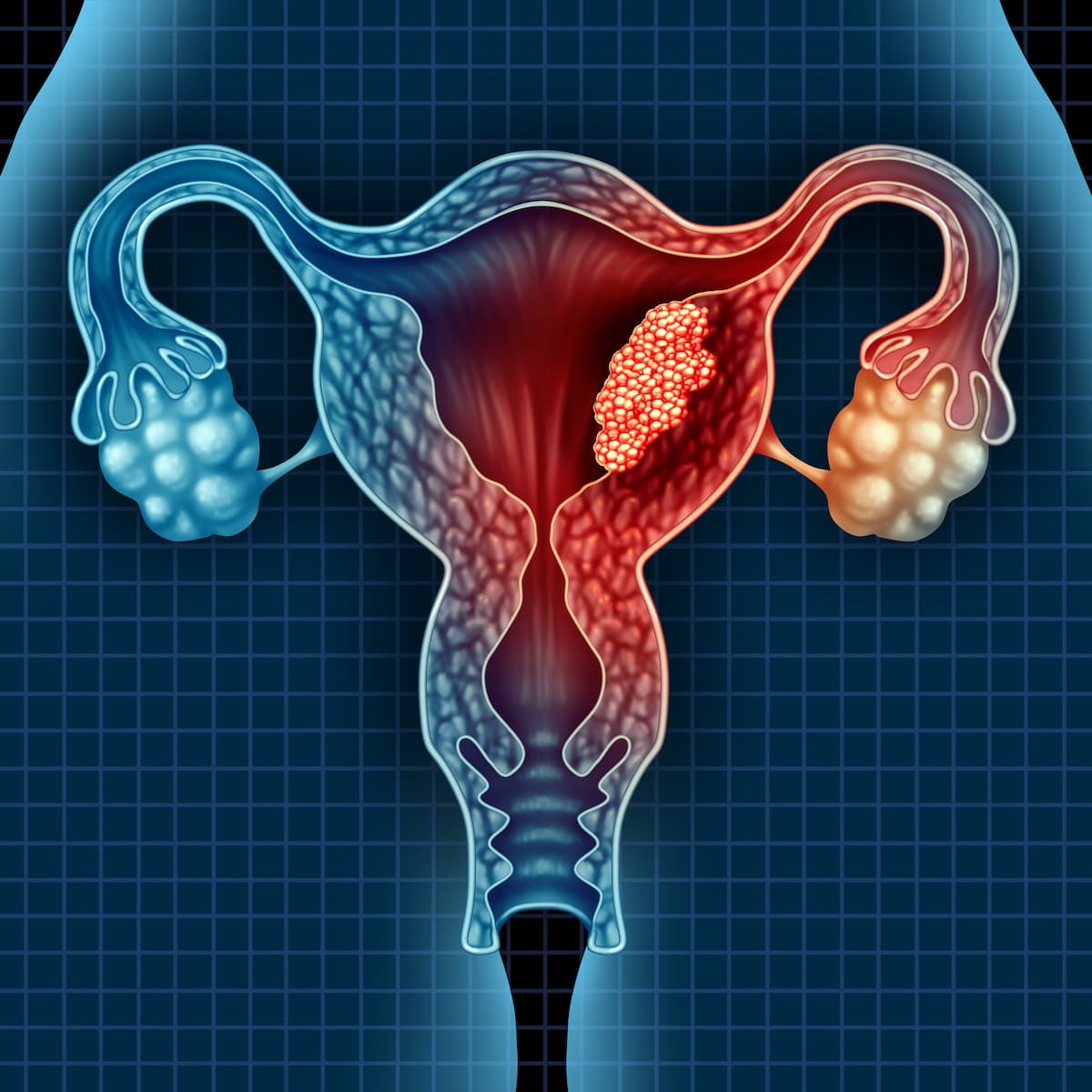Pembrolizumab Combo Yields Survival Benefit in Endometrial Cancer
Results from the KEYNOTE-868 trial showed a favorable benefit of pembrolizumab plus chemotherapy across endometrial cancer subgroups.
Pembrolizumab plus carboplatin and paclitaxel is not an approved combination in the United States for patients with stage III, IVA, or recurrent endometrial cancer.

Pembrolizumab (Keytruda) plus chemotherapy yielded a favorable overall survival (OS) benefit for patients with endometrial cancer, according to results from the phase 3 NRG-GY018/KEYNOTE-868 trial (NCT03914612) presented at the Society of Gynecologic Oncology (SGO) 2024 Annual Meeting on Women’s Cancer.
During the interim analysis, the OS was immature. For those with mismatch repair proficient (pMMR) status, the median OS was 27.96 months (95% CI, 21.42-not reached [NR]) in the pembrolizumab arm vs 27.37 (95% CI, 19.52-NR) in the placebo arm (HR, 0.79; 95% CI, 0.53-1.17; P = .1157). For those with mismatch repair deficient (dMMR) status, the median OS was not reached in either arm (HR, 0.55; 95% CI, 0.25-1.19; P = .0617).
For patients with pMMR disease, via investigator assessment, the median progression-free survival (PFS) was 13.1 months (95% CI, 10.6-19.5) in the pembrolizumab arm and 8.7 months (95% CI, 8.4-11.0) in the placebo arm (HR, 0.57; 95% CI, 0.44-0.74; P <.0001). In the blinded independent central review (BICR) assessment, the median PFS was 19.5 months (95% CI, 13.1-28.0) in the pembrolizumab arm and 11.0 months (95% CI, 9.0-11.5) in the placebo arm (HR, 0.64; 95% CI, 0.49-0.85; P = .0008).
In the pMMR population, the median PFS for those with a PD-L1 combined positive score (CPS) of 1 or more in the pembrolizumab arm was 13.1 months (95% CI, 9.1-19.8) vs 8.5 months (95% CI, 8.0-10.7) in the placebo arm (HR, 0.59; 95% CI, 0.43-0.80). For those with a PD-L1 CPS of less than 1, the median PFS in the pembrolizumab arm was 15.1 months (95% CI, 11.1-NR) vs 11.0 months (95% CI, 8.3-11.4) in the placebo arm (HR, 0.44; 95% CI, 0.26-0.75).
In patients with dMMR disease, the investigator-assessed median PFS was NR in the pembrolizumab arm (95% CI, 30.7-NR) and 8.3 months (955 CI, 6.5-12.3) in the placebo group (HR, 0.34; 95% CI, 0.22-0.53; P <.0001). When evaluated via BICR, the median PFS was NR in the pembrolizumab arm (95% CI, NR-NR) and 14.1 months (95% CI, 8.5-NR) in the placebo arm (HR, 0.45; 95% CI, 0.27-0.73; P = .0005).
Those with dMMR disease with a PD-L1 CPS of 1 or more had a median PFS that was NR in the pembrolizumab arm (95% CI, NR-NR) and 8.3 months (95% CI, 6.5-14.1) in the placebo arm (HR, 0.27; 95% CI, 0.16-0.47). For those with a CPS of less than 1, the median PFS was 12.0 months (95% CI, 6.5-NR) in the pembrolizumab arm and 4.9 months (95% CI, 4.2-9.9) in the placebo arm (HR, 0.30; 95% CI, 0.11-0.83).
In the pembrolizumab arm, those with pMMR status (n = 288), 72.2% had PD-L1 CPS of 1 or more and 27.8% had a PD-L1 CPS of less than 1. In the placebo arm (n = 108), PD-L1 status was observed in 79.6% vs 20.4%, respectively. For the placebo arm, those with pMMR status (n = 288) PD-L1 CPS of 1 or more was observed in 71.2% vs 28.8% for those with a CPS of less than 1. For those with dMMR (n = 111) on the placebo arm, PD-L1 CPS of 1 or more occurred in 87.4% and 12.6% for those with a CPS of less than 1.
“These findings are supportive of the addition of pembrolizumab to chemotherapy as a first-line treatment for patients with advanced or recurrent endometrial cancer, regardless of MMR status,” Ramez N. Eskander, MD, assistant professor of obstetrics, gynecology, and reproductive sciences at University of California San Diego Health, in California, said in a the presentation during the meeting.
Prior to beginning the presentation, Eskander noted that pembrolizumab plus carboplatin and paclitaxel is not an approved combination in the United States for patients with stage III, IVA, or recurrent endometrial cancer.
A total of 810 patients were randomly assigned 1:1 to intravenous (IV) placebo every 3 weeks plus IV paclitaxel at 175 mg/m2 plus IV carboplatin at an area under the curve of 5 every 3 weeks for 6 cycles (arm 1) or IV pembrolizumab at 200 mg every 3 weeks plus matched chemotherapy (arm 2). In arm 1, patients could continue IV placebo treatment every 6 weeks for an additional 14 cycles. In arm 2, patients could receive IV pembrolizumab at 400 mg every 6 weeks for an additional 14 cycles. It was noted that 588 patients had pMMR status and 222 had dMMR status.
The primary end point was investigator-assessed PFS via RECIST v1.1 criteria. Select secondary end points included OS in the pMMR and dMMR populations, PD-L1 status in both populations, investigator-assessed PFS per RECIST v1.1 by PD-L1 status in the 2 populations, and BICR vs investigator-assessed outcomes by MMR status.
Patients were eligible for treatment if they had measurable stage III/IVA or measurable/nonmeasurable stage IVB or recurrent endometrial cancer. Patients must also have a pathology report highlighting their MMR status, and an ECOG performance status between 0 and 2. Patients must not have received prior chemotherapy except for adjuvant chemotherapy if completed at least 12 months from the start of this study.
Reference
Eskander RN, Sill M, Miller A, et al. Overall survival, progression-free survival by PD-L1 status, and blinded independent central review results with pembrolizumab plus carboplatin/paclitaxel (CP) versus placebo plus CP in patients with endometrial cancer: results from the NRG GY018 trial. Presented at: Society of Gynecologic Oncology 2024 Annual Meeting for Womens Cancer; March 15-18, 2024; San Diego, CA.
Newsletter
Stay up to date on recent advances in the multidisciplinary approach to cancer.